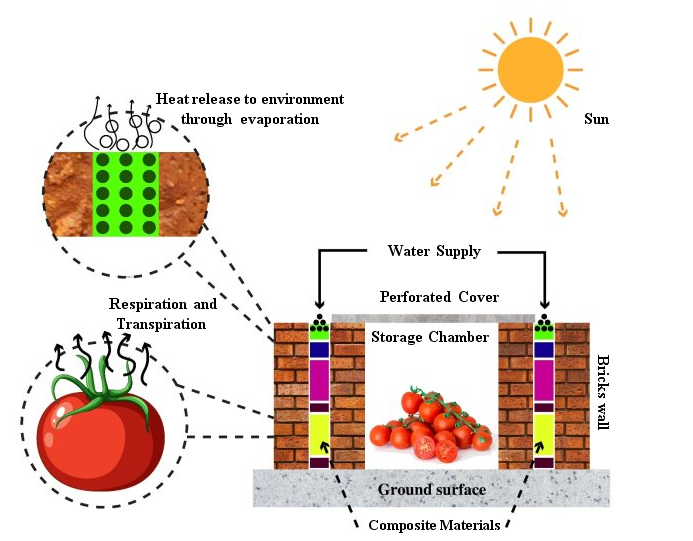Research Experience
Development and performance evaluation of a zero-energy cooling chamber as a sustainable alternative for post harvest storage.
Md Ashikul Alam Ashik, Md. Abu Mowazzem Hossain*, Raihan Ahmed Redoy, Zaber Mhamud, Sajal Chandra Banik
Oct 2023 – Feb 2024
Abstract
Post-harvest losses remain a significant challenge in tropical and subtropical regions, necessitating sustainable storage solutions for perishable commodities. This study presents the design, construction, and performance evaluation of a Zero Energy Cooling Chamber (ZECC) utilizing evaporative cooling as a sustainable alternative for post-harvest storage. The constructed ZECC maintains temperatures 5–8°C lower than ambient conditions while sustaining 90% relative humidity, resulting in significant moisture retention improvements (18–19%) with minimal water replenishment requirements. The research further compares the cooling effectiveness of composite materials—including rice husk powder, wood powder, charcoal, and silica—against dead silica (DS). Experimental results demonstrate that the composite-based ZECC exhibits greater thermal stability, with temperature variations limited to 0.7°C, compared to 1.1°C in the DS chamber. The results also show that the composite system achieves a 20-21% increase in heat rejection efficiency, confirming its superior cooling performance. These findings establish ZECC with composite materials as a scalable, cost-effective, and sustainable storage solution, minimizing post-harvest losses and extending food shelf life in high temperature, low-resource environments.
Objective
While previous research has primarily concentrated on single-material Zero Energy Cooling Chambers (ZECC), particularly those utilizing dead silica (DS), comparative studies exploring alternative composite materials have been limited. This study seeks to fill this gap by assessing the performance of ZECCs that incorporate composite materials, including rice husk powder, wood powder, charcoal, and silica, as substitutes for dead silica. These materials were chosen for their thermal insulation properties, moisture retention capabilities, and enhancement of evaporative cooling.
Graphical Representation

Key Points
- Designed and developed a cooling chamber that operates without any source of energy.
- Compared the efficiency of the cooling chamber by using dead silica and composite material (wood powder, Rice husk, charcoal powder) as an infill material.
- Validated the working of the cooling chamber physically by placing a 25kg tomato in it.
